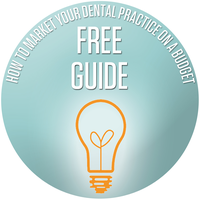One thing is certain: in any dental office there will be many claims filed. Each day, patients will arrive with different forms of insurance—each of which will need a claim filled out and filed. Filing these claims in a timely manner is an important part of being paid efficiently. However, when claims are not filled out properly, there is a chance that the insurance company will be left with more questions.

Leaving the insurance company seeking further information can be detrimental to any office because it can greatly delay the speed in which a claim is funded. Plus, the patient may find themselves caught in the middle due to particular funds that their insurance is refusing to cover. There are ways that these issues can be avoided.
Most importantly, make sure you fill out the claim form correctly. Giving the insurance company diagnostic film and/or a diagnostic photo doesn’t mean the processor will acknowledge having received the attachment unless you mark the box on the form to indicate you’ve supplied the film. The most recent ADA claim form has a place to check in order to tell the insurance company that this information has been sent.
But one of the best ways to ensure your claim gets paid without any glitches or follow ups is to provide a narrative with the claim paperwork. When you attach a narrative to the claim form, make sure you mark directly on the form that you’ve included these details. Usually when a claim has a narrative attached, it must be referred to a live person for review. This can reduce the risk that the carrier will request more information.
In the narrative, you should highlight as many details as possible that can help the processor understand your reasons for doing the procedure. The more information, the better. You can describe the procedure that was completed and explain why it was necessary. Adding this additional information will allow insurance providers the information that they need when determining whether the claim is covered.
Providing narratives will pay off because it will allow them to be paid faster. It will also cut down on the amount of communication that is required between the insurance companies, the patient and the dental office. Finally, it will eliminate any confusion that may surface when it comes to the insurance company understanding the claim. In the end, providing a narrative with all claims is the best option for providers to choose.



